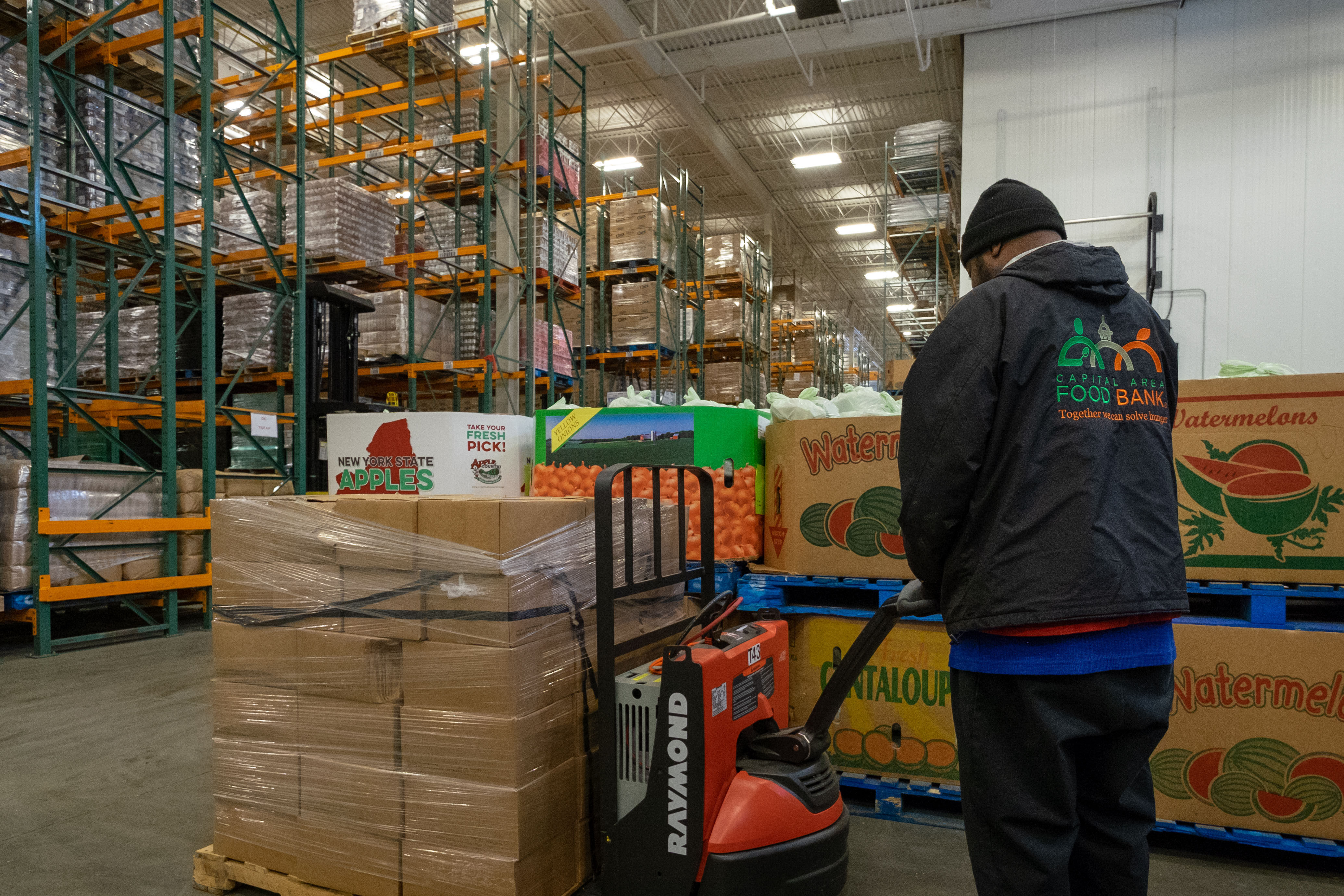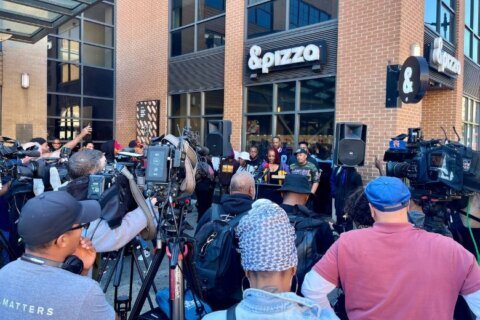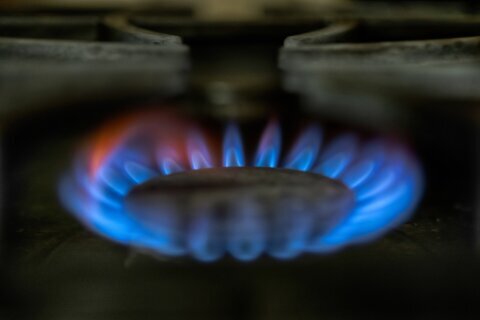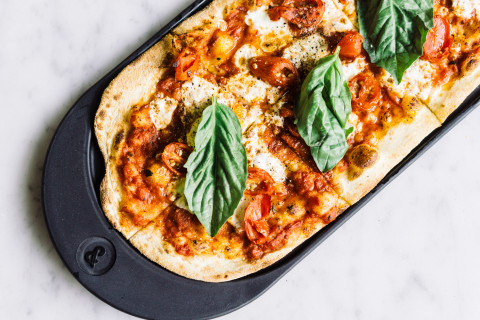
One of the most stunning visuals of the coronavirus pandemic was the sight of long lines of cars — miles long sometimes — approaching food banks and food giveaways all over the country.
Tens of millions of Americans lost their jobs over the past year, and that created an immense need, including in the D.C. area.
Radha Muthiah, the CEO of the Capital Area Food Bank, calls the last 12 months “remarkable.”
The food bank helps about 400 local food pantries and other groups keep food in stock, offers emergency food assistance and also runs its own markets around the region, providing meal kits and snacks to students and senior citizens.
“We’ve gone from providing about 30 million meals worth of food the year before the pandemic to 62 million meals worth of food just in the last 52 weeks,” said Muthiah in a recent interview.
Overall, the organization has helped 600,000 people in the region — about 50% more than before the pandemic, she said.
Other nonprofits that work to help feed people in our region reported similar increases, including Catholic Charities of Washington DC.
“About 2 million meals have been given out by Catholic Charities DC since the start of the pandemic,” said spokeswoman Kate Kennedy, adding that increased food assistance continues at three food pantries around the region.
At one pantry in Northwest D.C., the organization served 50 to 75 families before the pandemic. Since then, it’s up to 650 families, with some waiting in line for hours before the doors even opened.
Instant shock
What do you remember about the first month or two of the pandemic? It’s not a trick question: A lot of things happened all at once. One memory that may have faded was the way toilet paper disappeared — all kinds of essential household items disappeared early on. Many store shelves were empty, and that made life even harder at food banks.
“We receive about two thirds of our food donation, typically, from retailers,” said Muthiah. “When the pandemic hit, about 75% of that food supply for us ceased to exist. Food was flying off the shelf … so retailers had nothing to donate to us.”
That meant the food bank was purchasing food by the truckload instead. Since the pandemic hit last year, Muthiah said the Capital Area Food Bank alone has bought 770 truckloads of food to help meet the need.
The spike in pleas for help came within the first eight to 10 weeks and hasn’t let up very much. And because the crisis was driven by a virus, the organizations couldn’t necessarily rely on volunteers packing warehouses to help try to meet the need.
“We were in a quandary,” said Muthiah. “What we ended up doing was … hiring individuals who were unemployed to come and help us pack boxes of food and distribute that food.”
- Sign up for WTOP alerts
- Latest coronavirus test results in DC, Maryland and Virginia
- Coronavirus vaccine FAQ: What you need to know
- Latest vaccination numbers in DC, Maryland and Virginia
- Timeline: 1 year into the COVID-19 pandemic in the DC area
- Virginia Gov. Northam’s ‘difficult decisions,’ positive diagnosis
- Maryland Rep. Raskin endures ‘wretched year’ and makes history
- DC Mayor Bowser reflects on year of COVID-19 — and looks to the future
Looking for more information? D.C., Maryland and Virginia are each releasing more data every day. Visit their official sites here: Virginia | Maryland | D.C.
By the numbers
The Capital Area Food Bank says 50% more people in the region are suffering from food insecurity. At the same time, half of the nonprofits they partner with have also closed, even as the ones still open see anywhere from a 30% to 400% increase in people coming through the doors. Supply chain disruptions have led to a 75% decrease in retail donations, valued at about $2 million a month.
Since the pandemic, the food bank said, 20 community hubs have been set up to distribute extra food, and 36 sites remain open to help feed kids a daily grab-and-go dinner.
Catholic Charities DC Southern Maryland Food Bank gave out more than 12,200 “snack saks” to children and homebound seniors, to go with 25 large-scale community food distributions in D.C., Montgomery, and Prince George’s County.
The group still hands out hundreds of grocery boxes in apartment complexes and senior housing identified as being in need. Future distributions are in the works for residents in Ward 8 of the District later this month and next month in Wheaton, Maryland.
The silver lining
While the need has soared over the last year, there has also been a big increase in donations.
“We could not have purchased all those truckloads of food and met this increase in demand … without the generosity and the financial donations of those who could afford to,” said Muthiah.
Kennedy said Catholic Charities also saw an increase of 2,500 donors during the pandemic, and these increased efforts are expected to run through at least June.
Increased donations are “the only way in which we have managed to provide food to the 600,000 who are in need,” added Muthiah.
“While that number has increased dramatically in the last one year, we don’t see it decreasing very quickly in the next few months,” she said. “We see this need continuing for at least another year or two because those who were the first to be affected, the hardest affected, are likely to be the last to recover.”








